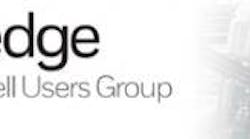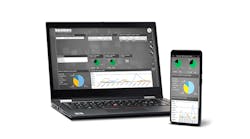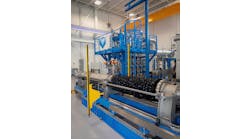[sidebar id =1]Think of the Internet of Things (IoT) as simply a global infrastructure for the information society, enabling advanced services by interconnecting physical and virtual things using existing and evolving interoperable information and communication technologies. “In the consumer world, IoT connects your phone to your shoe and your watch,” said Tim Vogel, gas marketing leader, Honeywell Process Solutions. “In the gas industry, we already do automated meter reading, and we can already access information like totalizer values, alarms and warnings from gas stations and pipelines from a remote control room. There also is sophisticated diagnostic software for various meter types available free of charge from the vendors. In the gas industry, what more do we need?”
What you need is up to you, but Vogel described several options to attendees of his session, “Leveraging IIoT for Condition-based Monitoring: Taking Diagnostics to the Next Level,” at Honeywell Users Group Americas 2016 this week in San Antonio.
There are reasons to want more. Today, gas prices are low, and companies need to operate more efficiently to stay competitive. Regulatory bodies require higher levels of calibration and safety, Millennials with new expectations are entering the workforce, and seasoned engineers are retiring. “How can we allow Millennials to adapt quickly, and capture the knowledge of retirees?” Vogel asked. “Relevant data is available in many places, most of the time. We want to make it as easy as possible to take this information and make it useful.” Honeywell has done this by creating a software suite that not only regularly pulls and stores relevant diagnostic data in a secure cloud, but also helps measurement engineers detect problems before they occur.
Cloud storage, mobile access
Gas Measurement and Data Management Services (GMDMS) integrates devices in the field (edge-enabled through a Cloud Link modem) with smart configuration and maintenance software, as well as advanced meter data management software and services. It reduces operational expense by streamlining routine maintenance and remote support.
The MasterLink mobile app dashboard automates tasks regularly done by operators, producing a view of the volume corrector and gathering information on alarms, radio signal strength, battery voltage, configuration integrity, firmware status and time sync. “Everything you need to know is on one screen,” Vogel said. “With a smartphone and Bluetooth, you can know if everything is OK or that there is an alarm. It also provides workflows – if you have to change a battery, the instructions are in the app.”
[sidebar id =2]MasterLink value-added services over the app include remote technical assistance center (TAC) support, which allows the technician to chat with TAC. TAC can see the configuration through the technician’s phone, and suggest or make changes. A site survey function allows users to evaluate cellular coverage at various locations, and another tool informs them about the health of nearby instruments. “It notifies you of any nearby alarms and gives you directions to them, to help you make best use of your time,” Vogel said.
Meanwhile, the company’s Meascon condition-based monitoring system (acquired with Honeywell’s acquisition of Elster) helps keep uncertainty as low as possible. “My father told me that no matter what you’re measuring, you’re always wrong,” Vogel said, because no measuring tool is perfectly precise and accurate. But calibration helps.
Toward condition-based maintenance
Some still use traditional time-based maintenance (TBM) and have instruments calibrated at regular intervals whether they need it or not. Practitioners of risk-based maintenance (RBM) can reduce frequencies when a satisfactory level of stability has been demonstrated, and condition-based maintenance (CBM) is done only when indicators show that equipment is going to fail or performance is deteriorating.
“TBM is costly, so if nothing is going wrong, you can extend the intervals. Meascon is a tool that lets you do that,” Vogel said. It provides a diagnostic dashboard with a real-time view of stations, and automates 24/7 condition-based monitoring. “This reduces risk and cuts the long-term total cost of ownership.”
Meascon runs on a PC, tablet or smartphone. It makes sense of complicated data, shows trends and allows users or a Honeywell expert to see a problem and troubleshoot it. “Those experts see thousands of meters, not just a few,” Vogel said, so they have experience that can help save time and avoid trouble.
Extending a recalibration interval from one to two years can save $50,000, but correcting inaccuracy can be worth more. “An error of 0.5% in gas measurement can add up to $1 million in the course of a year,” Vogel said. “You want to detect that error as early as possible, not after a year when $1 million of revenue has gone missing.”





